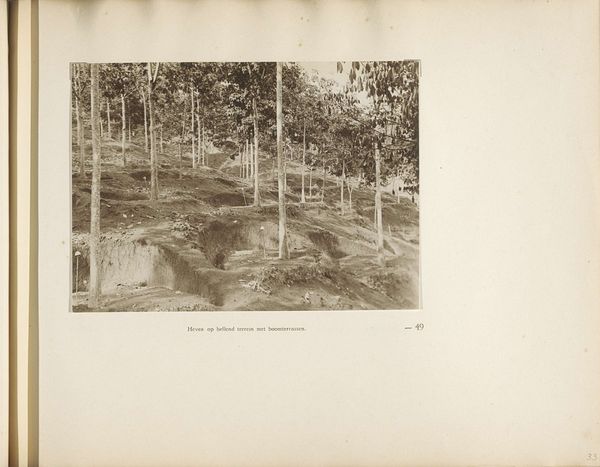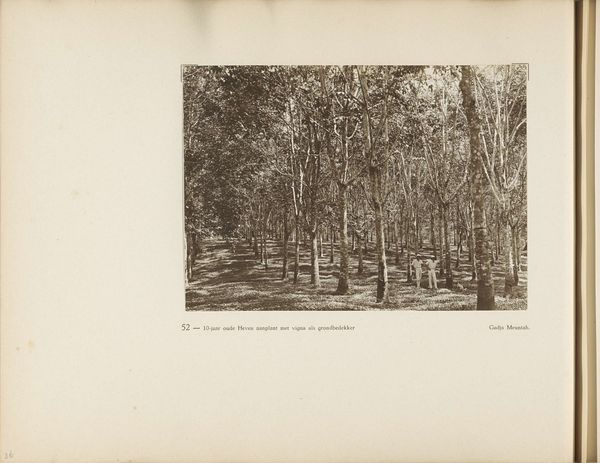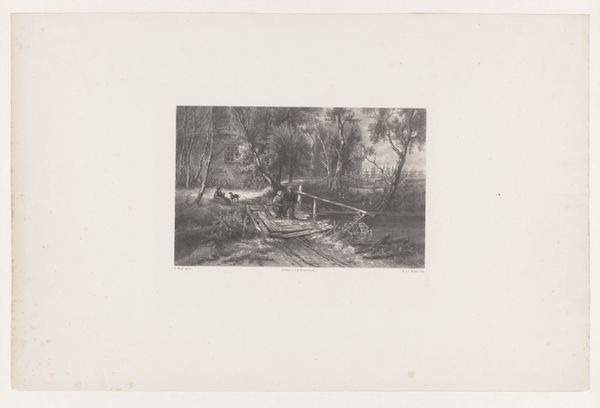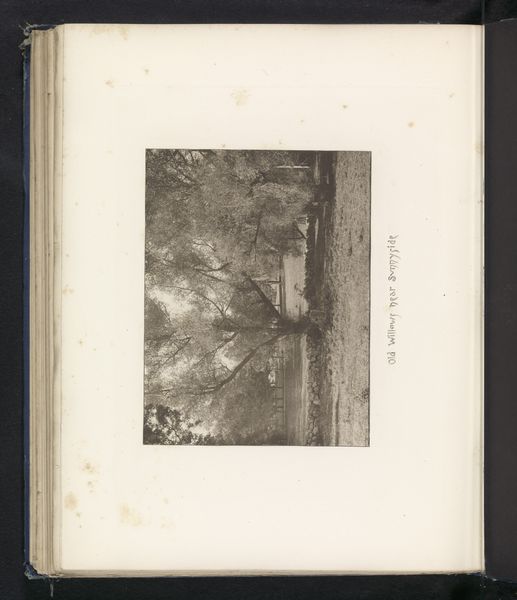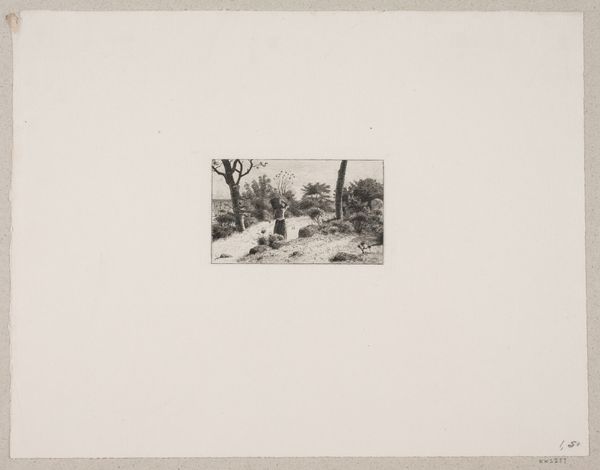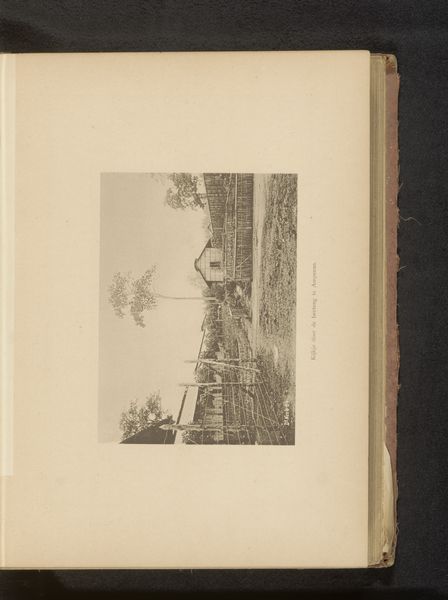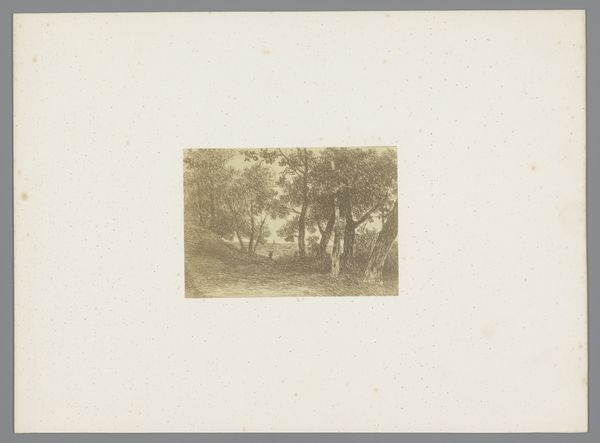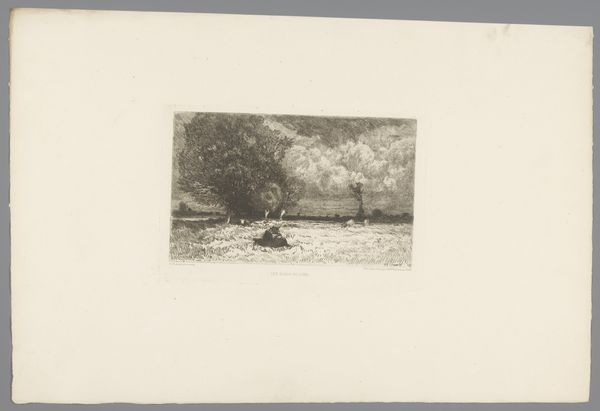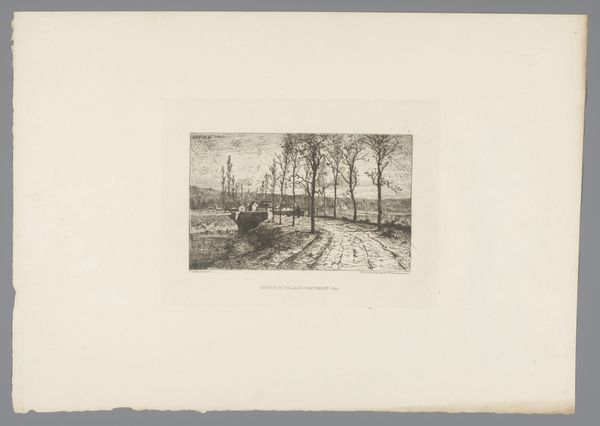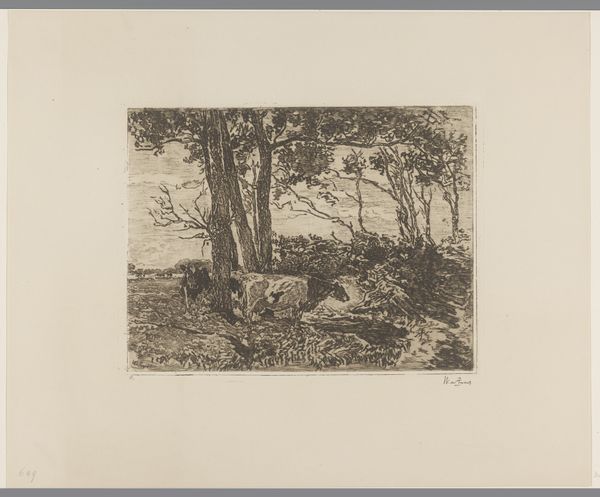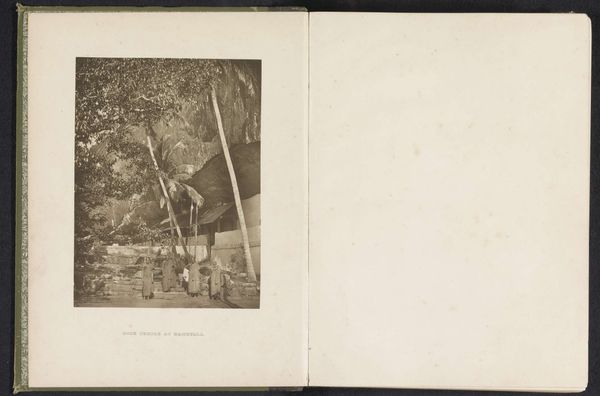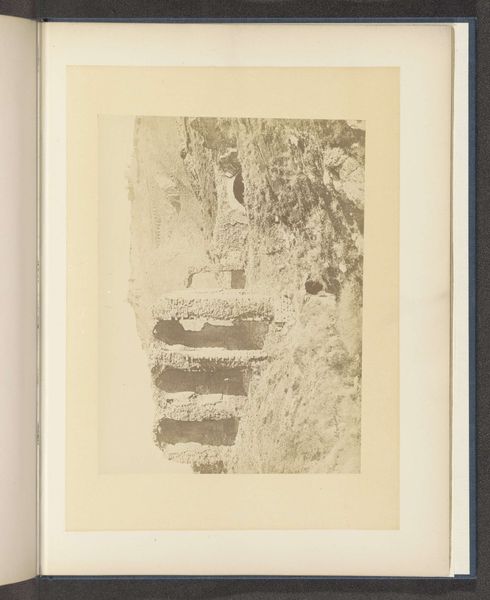
Pagina 50 van fotoboek van de Algemeene Vereeniging van Rubberplanters ter Oostkust van Sumatra (A.V.R.O.S.) c. 1924 - 1925
0:00
0:00
print, photography, gelatin-silver-print
# print
#
landscape
#
photography
#
gelatin-silver-print
#
genre-painting
Dimensions: height 240 mm, width 310 mm
Copyright: Rijks Museum: Open Domain
Curator: Here we have a photograph, "Page 50 from a Photo Album of the General Association of Rubber Planters on the East Coast of Sumatra," or A.V.R.O.S., dating from around 1924-1925. It's currently held in the Rijksmuseum. The photograph itself is a gelatin silver print, and is credited to J.W. Meyster. Editor: Oh, the image itself has this strangely compelling distance to it. I see workers digging a long ditch in a landscape framed by almost unnaturally uniform trees, but it feels muted, the energy somehow trapped under a veneer of… something imposed. Curator: Indeed, there’s a constructed nature here that goes beyond simply documenting a scene. It speaks volumes about labor practices of the time, specifically colonial economics in Sumatra, how photographic images became crucial instruments of power. Editor: Yes, exactly. The arrangement of workers almost in a line, swallowed by the unnatural drainage cut into the environment for profit—it removes any sense of individual experience. It makes me question who benefits and who is just… consumed. Curator: The A.V.R.O.S. association obviously wanted to portray efficiency, modernization. This was image-building. It masks the conditions on the ground, the reality of workers on these rubber plantations. They want a kind of idyllic industrial landscape to counter any bad image of the Dutch occupation. Editor: It is an interesting landscape with almost the feel of genre painting because there's so much deliberate stagecraft here that I don't believe I'm seeing pure documentation. All in the name of rubber. Even in its muted, old presentation now, that weight doesn't really fade, does it? Curator: No, the image is deeply embedded in a political and social landscape that even its artistic qualities can't quite erase. And that tension, between the artistry of the image and the exploitative context it documents, that’s precisely what keeps it so potent, almost a century later. Editor: Definitely powerful. It also holds that lesson, doesn't it, to look critically. That nothing is completely transparent. The best art usually makes us work for meaning and understanding.
Comments
No comments
Be the first to comment and join the conversation on the ultimate creative platform.

